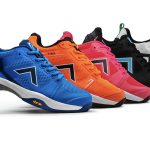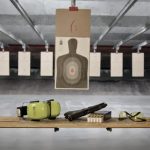Callaway Golf Company is reducing its revenue and earnings guidance in light of weakening sales trends. Key factors causing the lowered expectations include the underperformance at retail of its titanium driver models, a continuing decline in business in Japan, and revised expectations for a bigger than expected loss from its Top-Flite operations. These negatives are not expected to be offset by better than forecasted results in other parts of the business.
The Company reported that strong first quarter Callaway Golf wood sales (up 32% from the previous year) had not been followed by the expected rate of sell-through at retail by its titanium driver models, particularly its moderately priced Big Bertha titanium drivers. These products had constituted a sizable portion of the Company's expected volume in woods for the year. The Company has observed recently a slowing of retail sales for these products, resulting in a reduction in re-orders.
As a result, second quarter wholesale sales are lagging behind expectations, and sales forecasts for the remainder of the year have been reduced. Moreover, the change in overall product mix and the need for competitive sales programs to match those being offered by other manufacturers are expected to cause a significant drop in gross profits for the business as a whole.
“As we said at the end of the first quarter, and as is the case every year, a key to our success is the rate of sell-through in the second quarter and the resulting re-orders,” said Ron Drapeau, Chairman and CEO. “Unfortunately, retail sales of our titanium drivers in the second quarter of 2004 have been negatively affected by two factors. First, this segment of the market continues to see retail pricing weaken as it is plagued by heavily discounted and closeout competitor products that have not moved through the channels. Recently introduced competitor product that was selling for about $399 only months ago is advertised today at $199 or even lower. This price compression has reduced the amount of titanium driver business being transacted at retail prices above $300, negatively impacting sales of our Great Big Bertha II models. It has also placed a lot of closeout or markdown product, including recently introduced premium brand name titanium product, into the marketplace at lower price points where it competes with our Big Bertha drivers. Second, there appears to be a preference among consumers in this product segment for super-oversized drivers approaching the USGA head size limit of 460cc's. Our Big Bertha and Great Big Bertha II drivers have smaller head sizes (360 and 380 cc's, respectively) and are coming under pressure in the marketplace. At this point, they have not developed the expected traction in this competitive set. We are concerned about the current environment and expect a significant shortfall in sales and earnings as a result.”
“To address these issues,” Mr. Drapeau continued, “we have already gone to the market with some reduced pricing and aggressive sales programs, including programs directed at stimulating sell-through at retail. We hope to see some benefits from these actions in the third quarter, but will continue to monitor sell-through and take additional actions later in the year, if necessary. At the same time, we are undertaking certain actions in our business that will improve our product design, development and supply process to make it more responsive and efficient, and otherwise take significant costs out of the organization. Some of these actions are expected to result in charges this year, but those charges will be offset, at least in significant part, with savings in the last part of this year and for the full year beginning January 1, 2005.”
The Company further announced that its business in Japan had continued to decline from disappointing first quarter results. Moreover, the Company reported that its business in all foreign markets is being adversely impacted both by local economic issues and currency fluctuations that in turn impact pricing. Currently, sales in Japan are expected to be as much as 20 to 25% below 2003 levels. “Japan continues to be a struggle for us,” reported Mr. Drapeau. “We are evaluating product and operational changes, and will advise shareholders of a timetable for improving this business over the next several months.”
At Top-Flite Golf Company, the new management team which took over following the acquisition of this business from bankruptcy in September of 2003 is continuing with its restructuring of the business. In addition to changes in sales and operations that were announced previously, management intends to rationalize the current product line to eliminate products and/or models that do not deliver appropriate returns. This action will cause a reduction in expected revenues for the year, resulting in losses for the full year roughly in line with the losses reported for the partial year (3.5 months) of operations in 2003. On a broader perspective, cost savings achieved by moving the bulk of the manufacturing operations for Callaway Golf branded golf balls to Top-Flite are expected to result in the elimination of all losses from that business and the generation of an annual profit from that business for the first time since launch in 2000. This contribution to Callaway Golf's ball business is expected to be at least $0.26 per fully diluted share, more than offsetting the losses in the Top-Flite stand-alone business and making the acquisition as a whole accretive in its first year.
As noted above, integration efforts at Top-Flite are continuing. The consolidation of operations in Australia is complete, and consolidation in Canada and Europe is expected to be completed by year-end. This integration of overseas operations is expected to generate about $5 million in annual savings beginning in 2005, while also improving service and support in these regions. Changes implemented at Top-Flite's headquarters have improved manufacturing costs and reduced overhead, with expected additional annual savings of about $4 million beginning in 2005.
“Top-Flite is a strong brand anchored by good, low cost manufacturing operations,” said Mr. Drapeau. “Unfortunately, it has been operated in recent years to service crushing debt payments rather than to build a sustainable business model with adequate returns. We are making the necessary changes to the business and the product line this year so Top-Flite can again assume its historical role as a leading golf brand. In the meantime, we are seeing immediate rewards in our Callaway Golf ball business from the integration of manufacturing operations.”
Balancing the negative news somewhat, the Company expects to report that sales of its flagship ERC Fusion drivers and fairway woods will have exceeded expectations in the second quarter and for the first half of the year, and it expects to maintain its market-leading position in the U.S. in irons and putters. In addition, the Company expects to report that its Callaway Golf ball business will again report a profitable quarter, with sales strongly up year-over-year due in part to consumer demand for the new HX Tour golf ball. However, these gains are not expected to offset fully the downsides now forecasted in the titanium woods business. Cash flow for the year is expected to remain positive, with net cash from operations of more than $60 million and a cash position at year-end of more than $55 million, with essentially no debt.
“We remain committed to regaining our leadership position in the woods market,” continued Mr. Drapeau. “While there is no doubt that this turn of events is a setback in our timetable for achieving this goal, there is equally no doubt that we intend to focus our resources and skills on defending our position in the market, protecting our brands, and fighting for our share of the business. We have a strong financial foundation that has produced industry-leading profit margins, and can use that foundation to address these challenges and move forward in 2005.”
BUSINESS OUTLOOK
The Company currently expects second quarter net sales to be in a range between $290 and $295 million, with fully diluted earnings per share to be in a range between $0.10 and $0.14, including integration charges of approximately $0.09 per share. This second quarter estimate includes losses at Top-Flite of about $0.01 per share. Company gross profits as a percentage of sales, including integration charges, are expected to be in the 42% range (44% range excluding integration charges), reflecting the dilutive effect of lower margin Top-Flite sales and the impact of the new sales programs instituted in the Callaway Golf business.
The Company no longer expects to reach its earlier annual guidance estimates of between $1.00 and $1.06 billion in net sales and fully diluted earnings per share between $0.82 and $0.97, including integration charges of approximately $0.33 per share. The Company is therefore revising its annual guidance estimates downward to between $975 and $990 million in net sales and between $0.15 and $0.25 fully diluted earnings per share, including estimated integration charges of approximately $0.25 per share. This annual guidance includes expected losses at Top-Flite of between $0.10 and $0.14 per share. Company gross profits including integration charges are expected to be in the 41% range (43% range excluding integration charges), again reflecting the impact of Top-Flite sales and the new Callaway Golf sales programs.
“The dynamics of our business have changed very suddenly following strong first quarter sales, making it very difficult to make predictions,” said Mr. Drapeau. “Whether we hit, exceed or miss these expectations will depend upon a number of factors, including business conditions in general, the competitive actions of other manufacturers, and the success of our programs and efforts. We currently expect to be able to provide further guidance for the remainder of 2004 at the time we announce final second quarter results in July.”
“We have built into our 2004 forecast a significant level of expenditures and costs reflecting our intention to compete aggressively in the back half of the year,” Mr. Drapeau continued. “The game has changed, and we are adapting and will continue to be a significant force going forward. We have focused on protecting the market from irrational behavior for the past three years. But we will no longer sit on the sideline and allow our share to dissipate. By the time 2005 begins, we will have addressed these pricing and product issues and will be positioned to move forward toward our goal of recapturing our historical leadership position in the woods market segment. In 2005 we will be going after growth in revenue and market share, with expected margins that are better than those currently forecasted for 2004, but less than historical levels due to the dilutive effect of the lower margin Top-Flite business, further growth in our Callaway Golf ball business, and price compression in the premium wood business.”















